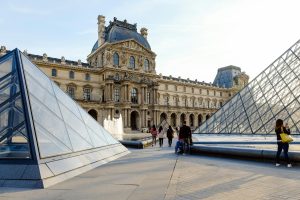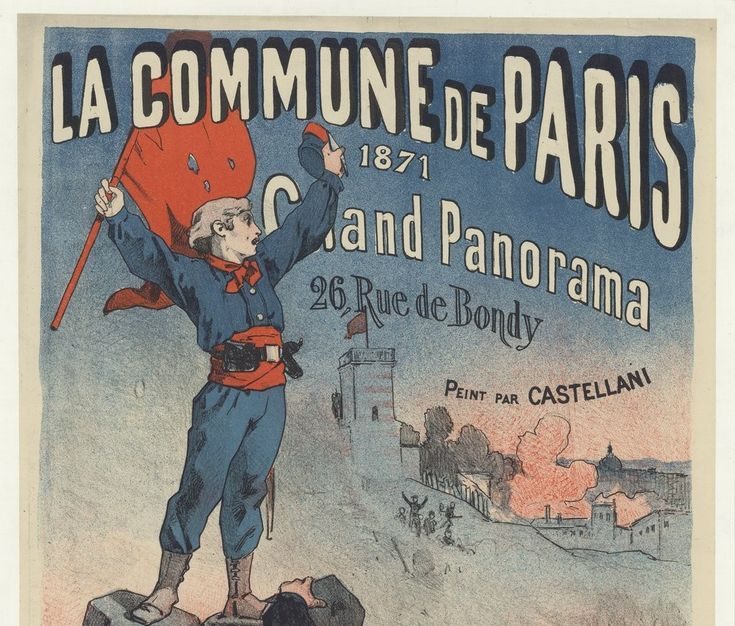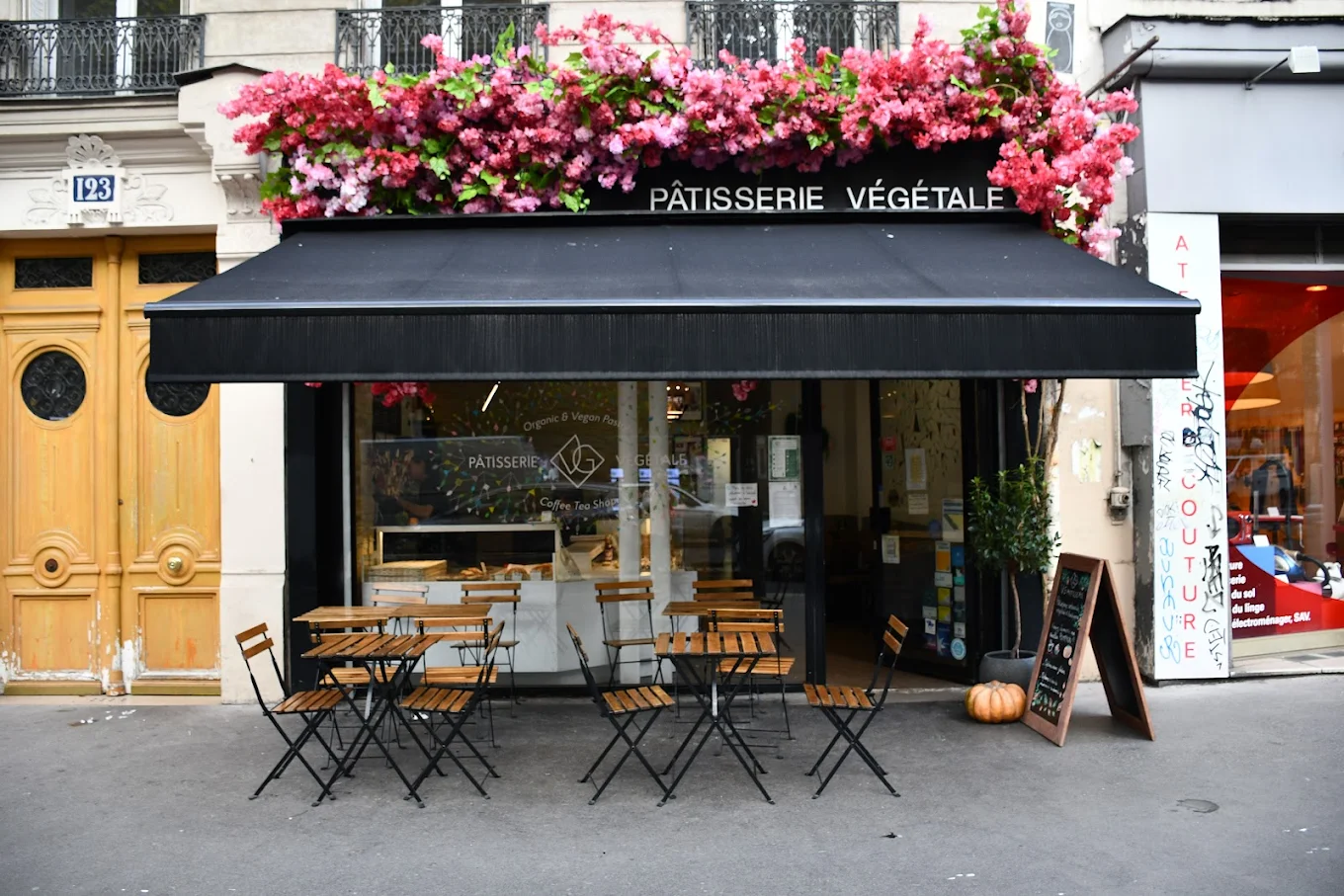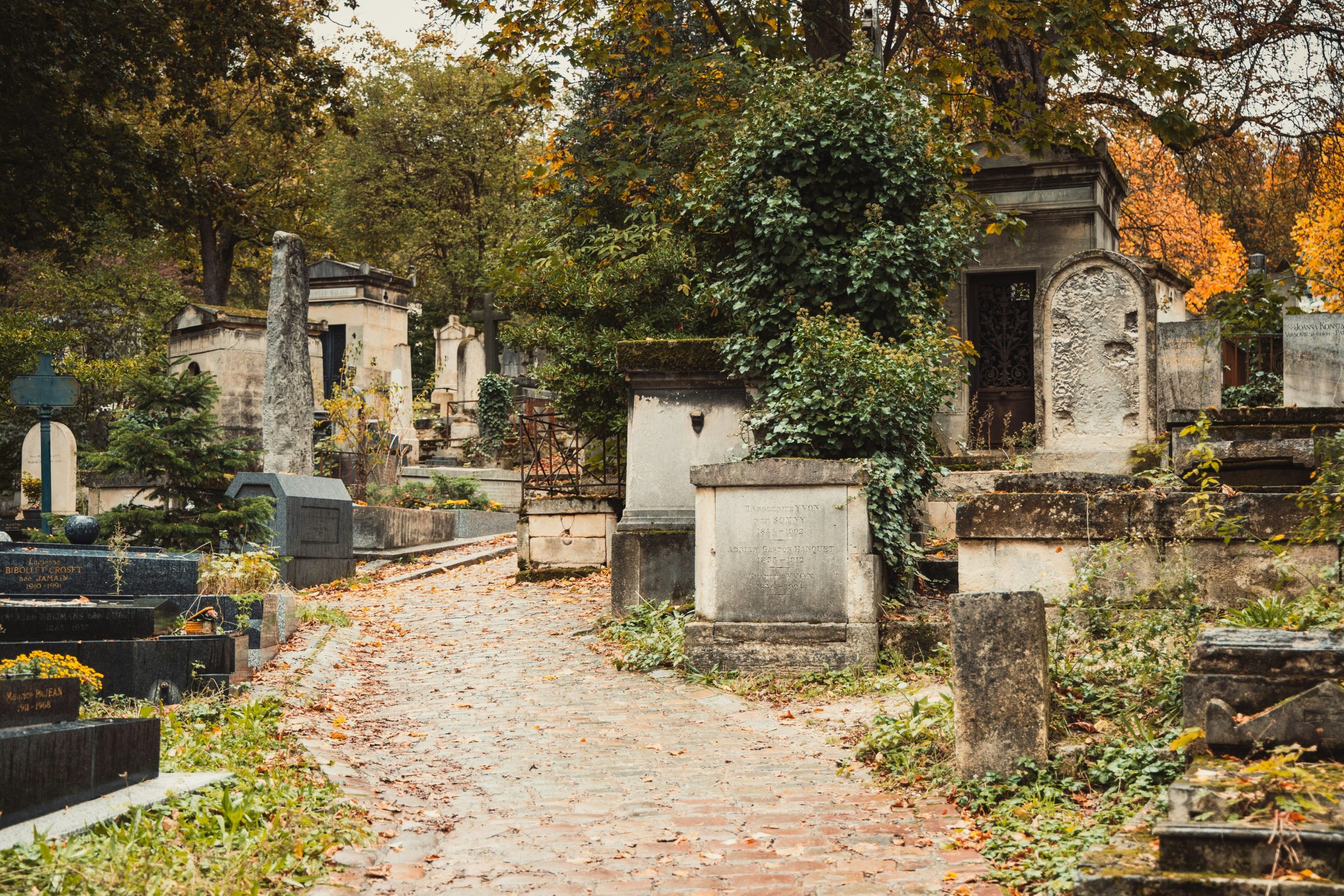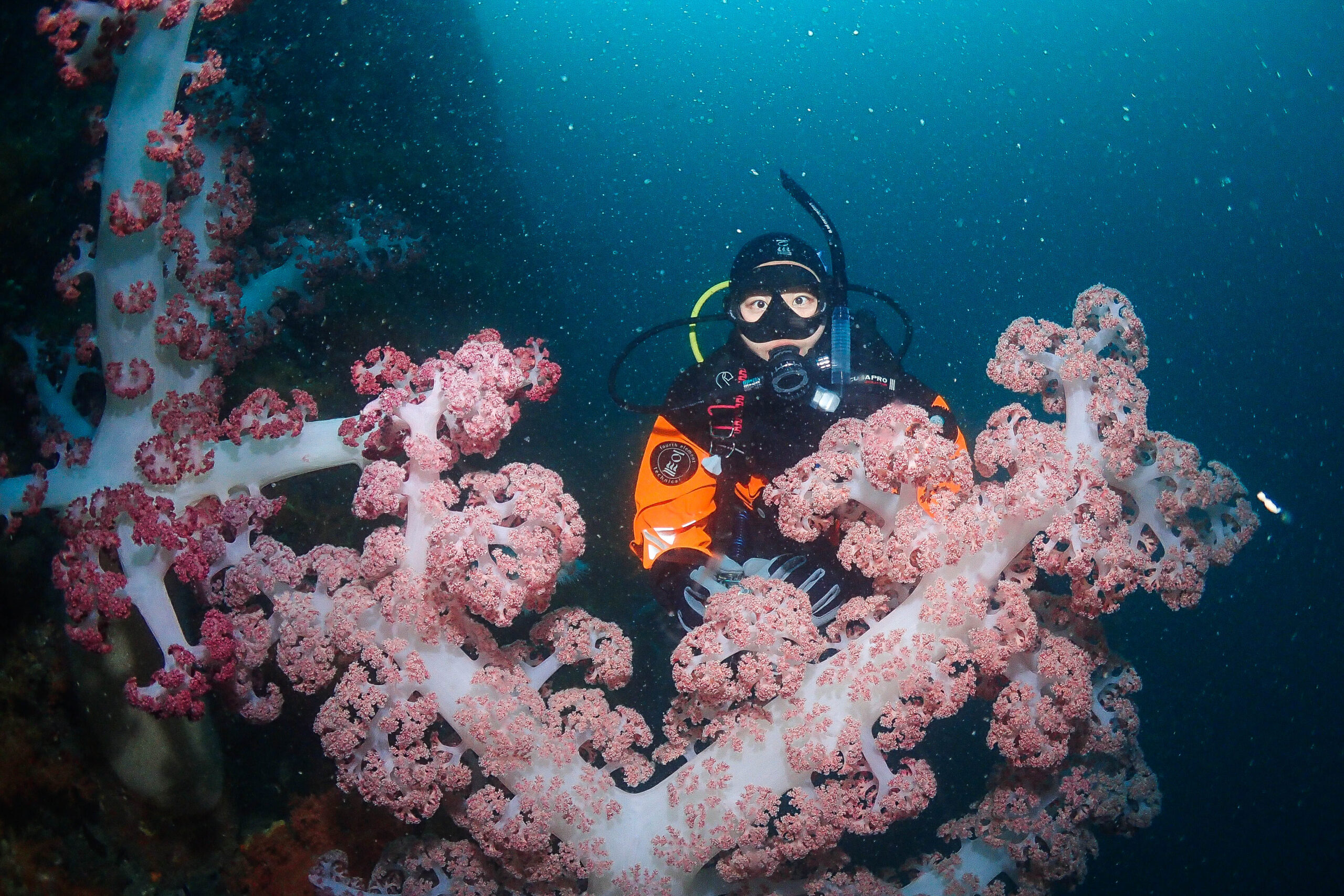On a sunny afternoon in Paris, I hoped to pass through the golden gates of Les Invalides and admire this magnificent architecture. However, as soon as I stepped into the Dôme des Invalides, I found myself face to face with the tomb of Napoleon Bonaparte, one of Europe’s most powerful legacies.
And what a tomb it was!
While I had expected to find a small tomb chamber in a corner of the museum, what greeted me was a massive, imposing monument.
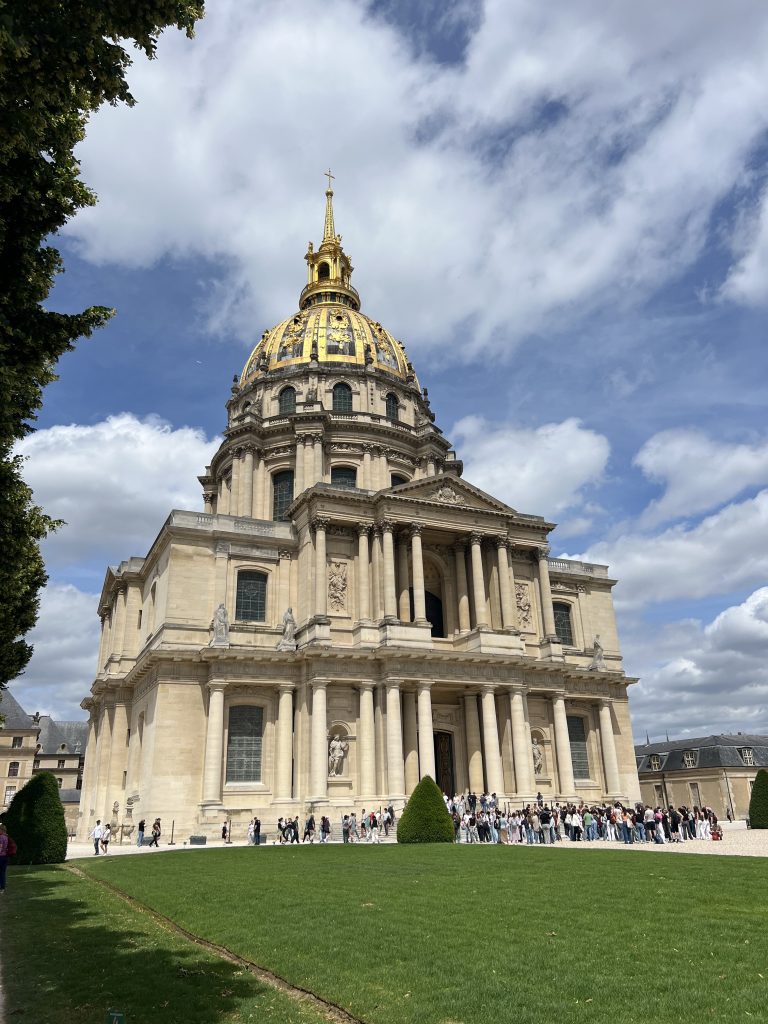
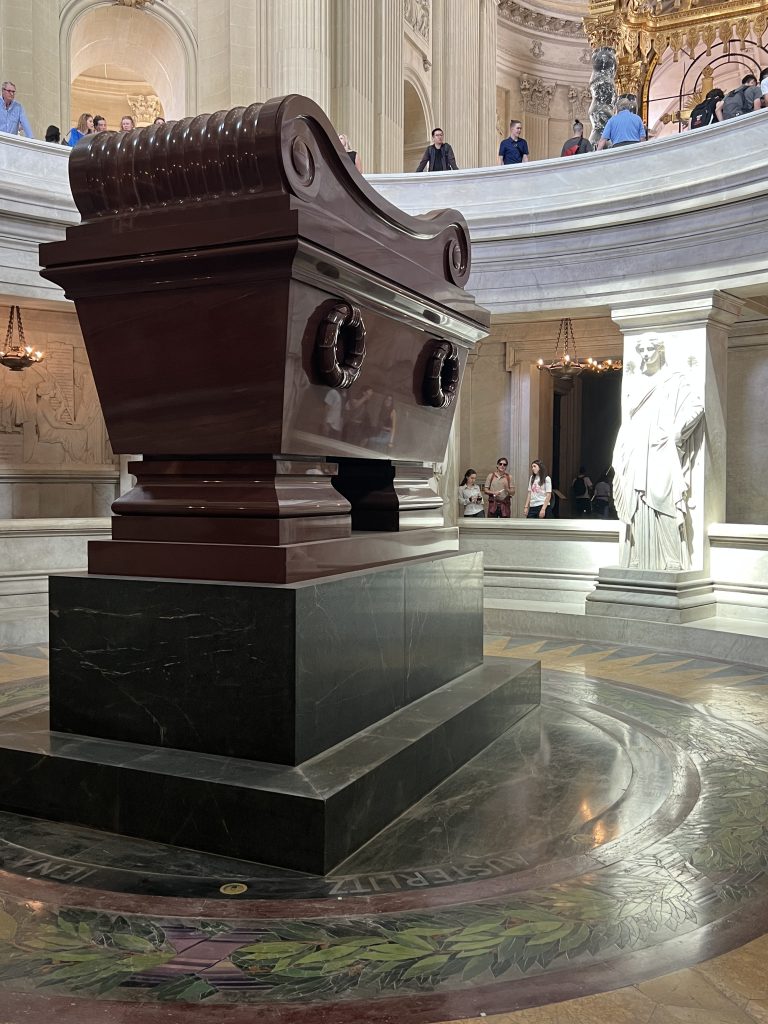
Before we get into the details, let’s understand why this man is so important.
Napoleon Bonaparte was a general who established the French Empire in the early 19th century. Born in Corsica in 1769. Napoleon is known for the Napoleonic Wars, legal reforms (especially the Napoleonic Code), and, of course, his vision of a united, modern Europe under French leadership.
Though loved by some and feared by others, Napoleon was a leader who transformed the face of Europe. As much a strategic genius as he was a ambitious ruler who launched campaigns that cost the lives of millions, his rise from an unknown soldier to emperor is one of history’s most fascinating journeys.
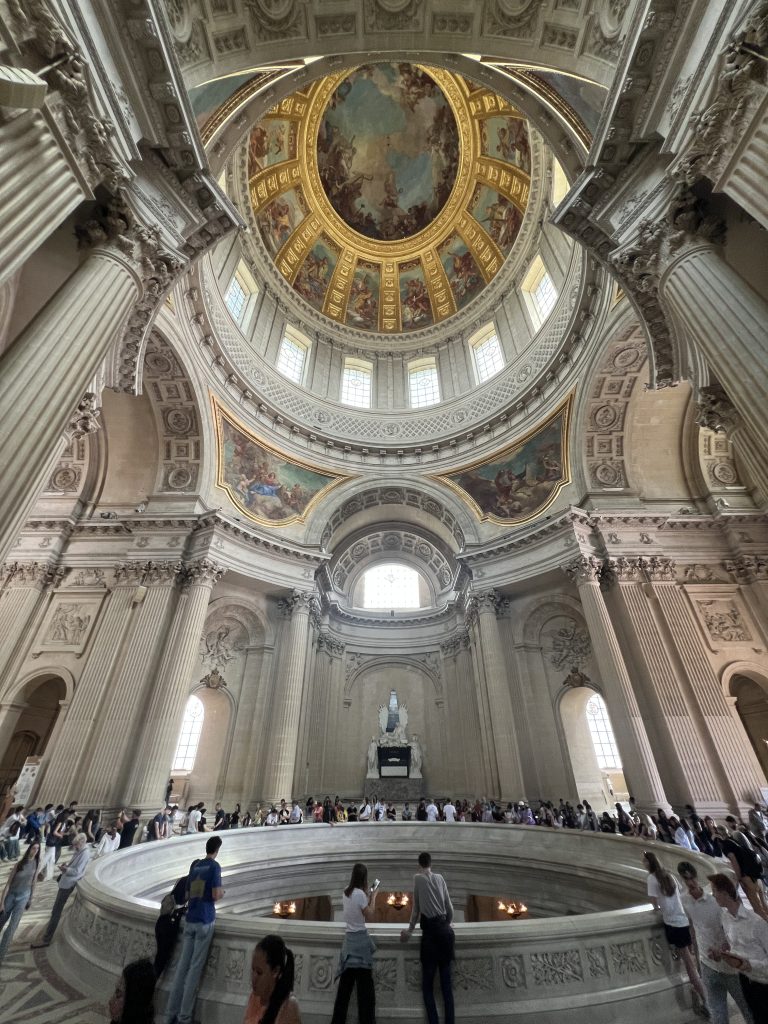
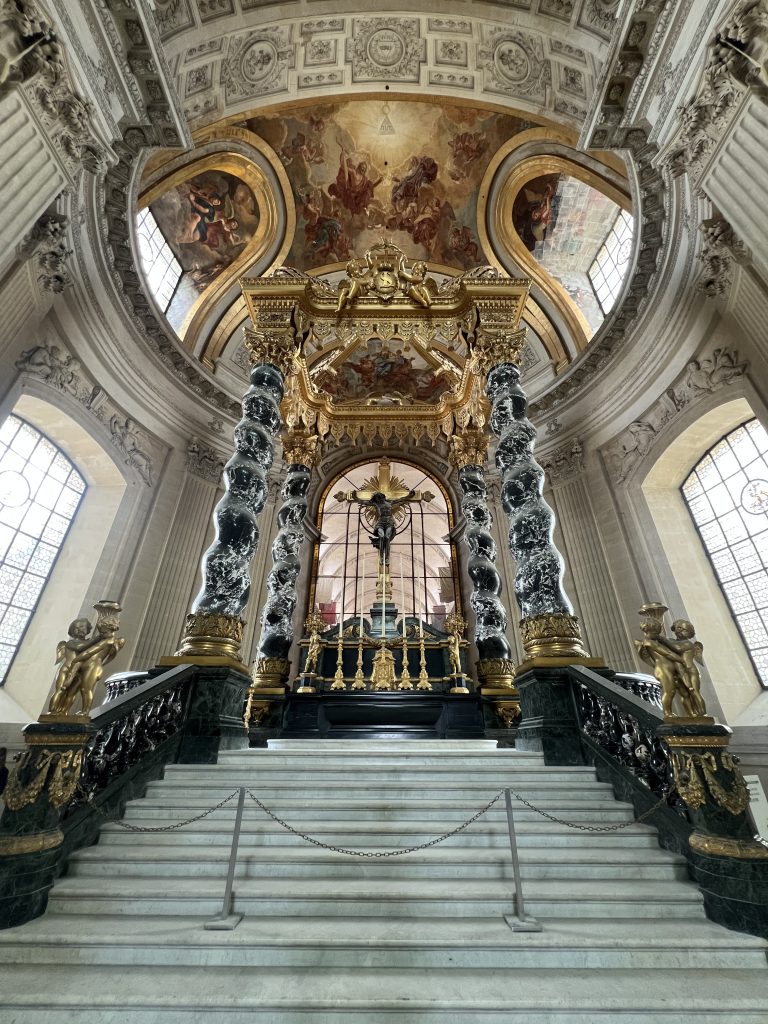
Napoleon Bonaparte, the emperor who redrew the map of Europe, died in exile on the remote island of Saint Helena in 1821. He was buried in a simple grave surrounded by willow trees, far from the power he once wielded.
However, nearly 20 years after his death, in 1840, King Louis-Philippe I ordered Napoleon’s remains to be returned to France. This event is known as the Retour des Cendres (Return of the Ashes).
As the coffin passed by, thousands of people filled the streets of Paris, and it was eventually buried beneath the dome of Les Invalides, which had been established by Louis XIV as a military hospital and home for war veterans.
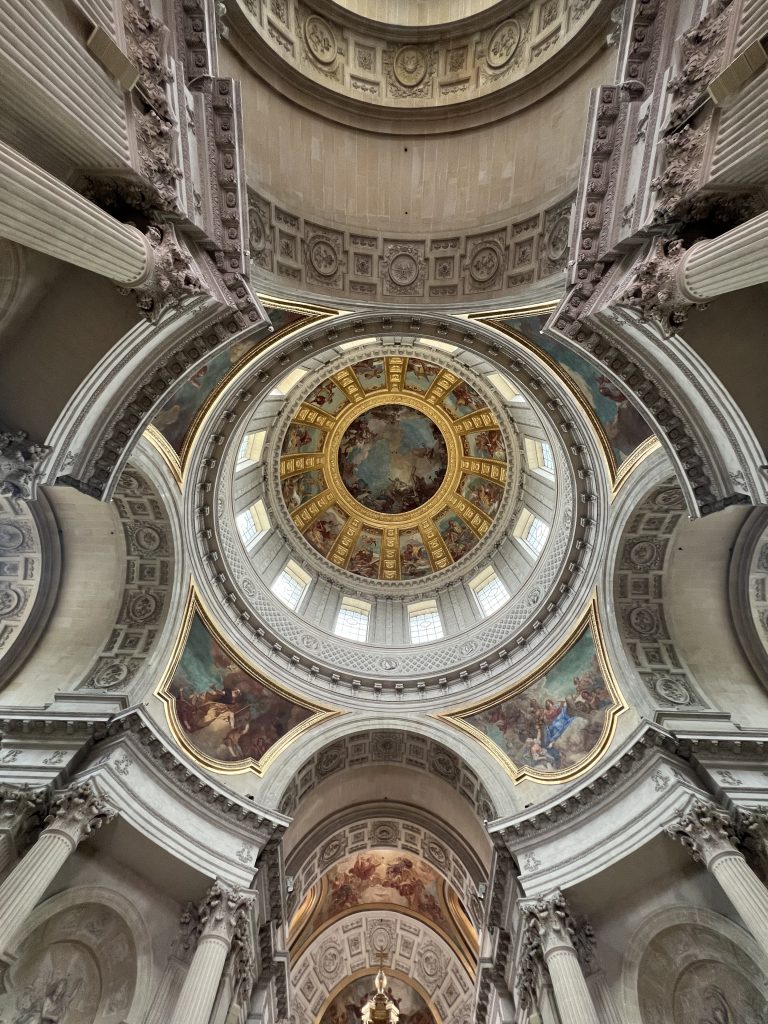
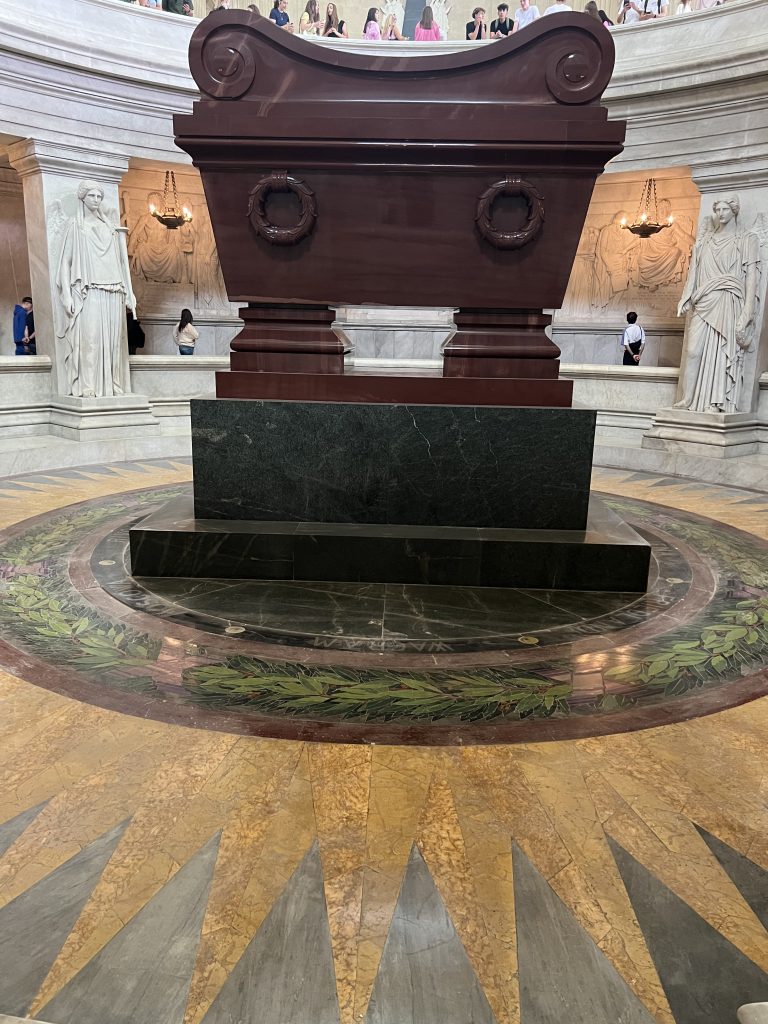
Of course, it took some time for the tomb to take its present form. The red tomb here was only completed in 1891. It is buried under the dome, surrounded by twelve statues symbolizing Napoleon’s achievements.
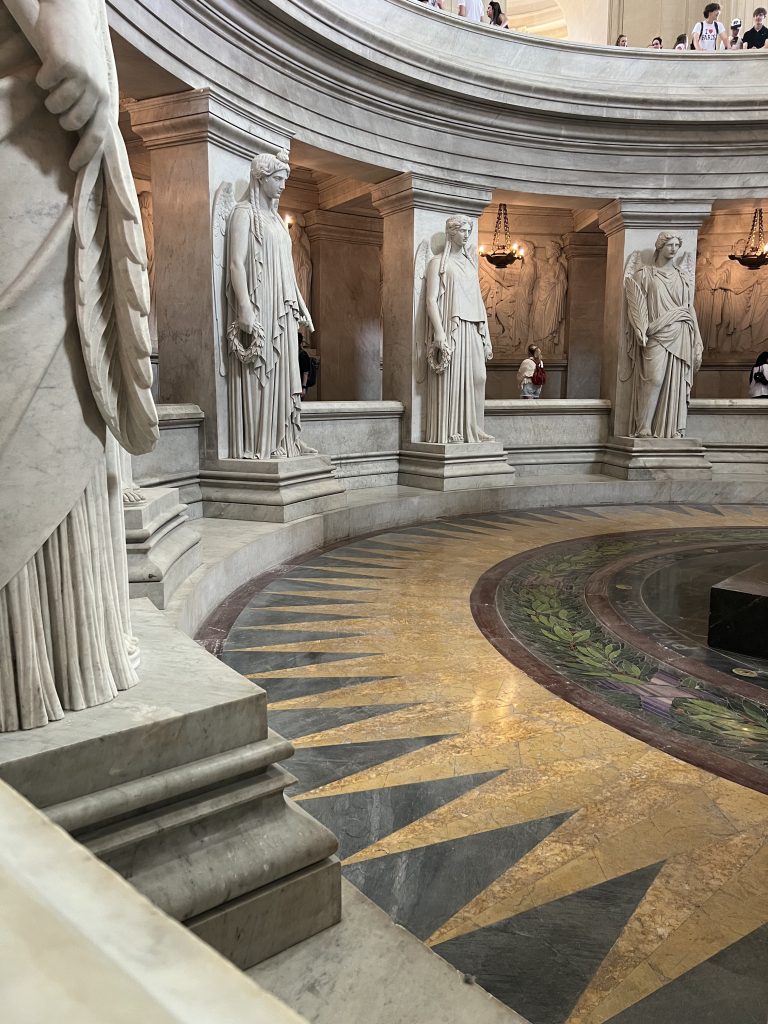
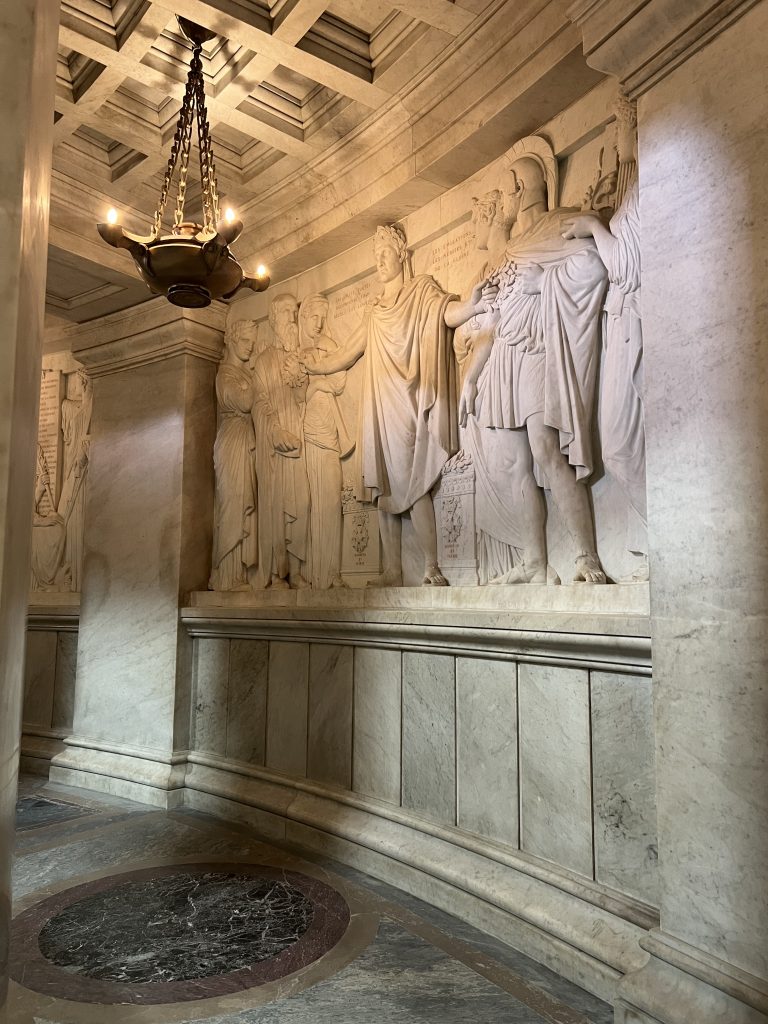
Another thing that surprised me was that Napoleon was not alone here.
For example, Napoleon II, his only legitimate son (known as the King of Rome), was reburied here in 1940. Although he never ruled, his tomb was placed here with honor.
His brothers Joseph and Jérôme Bonaparte are also here. Joseph ruled Spain and Naples, while Jérôme ruled Westphalia.
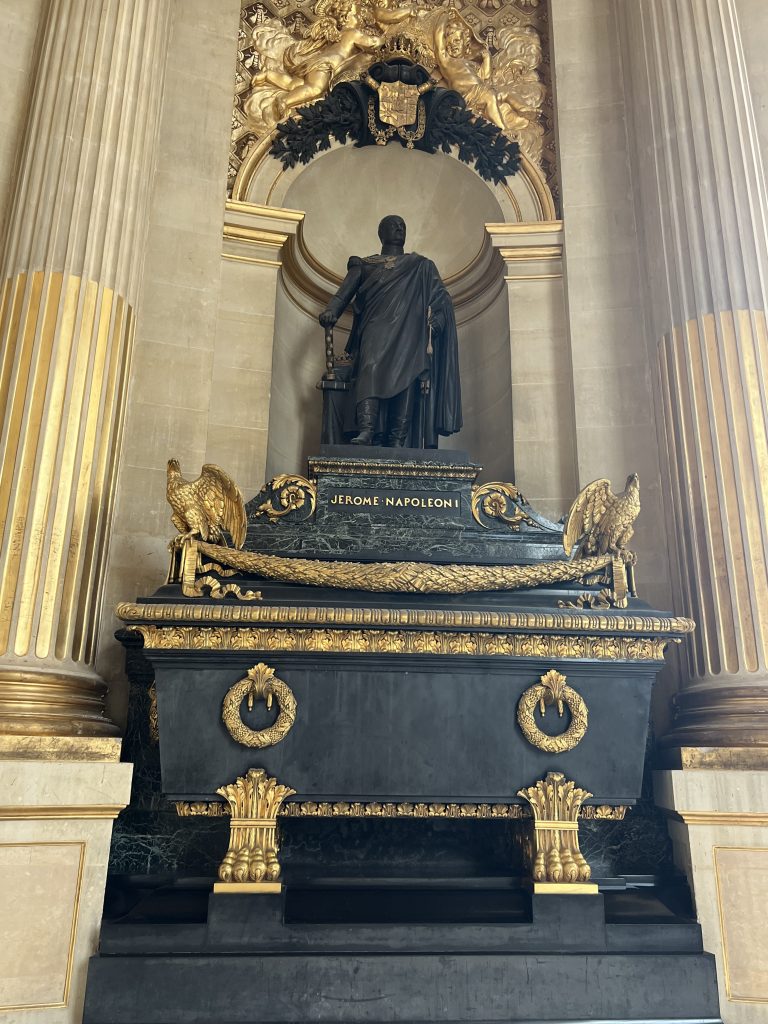
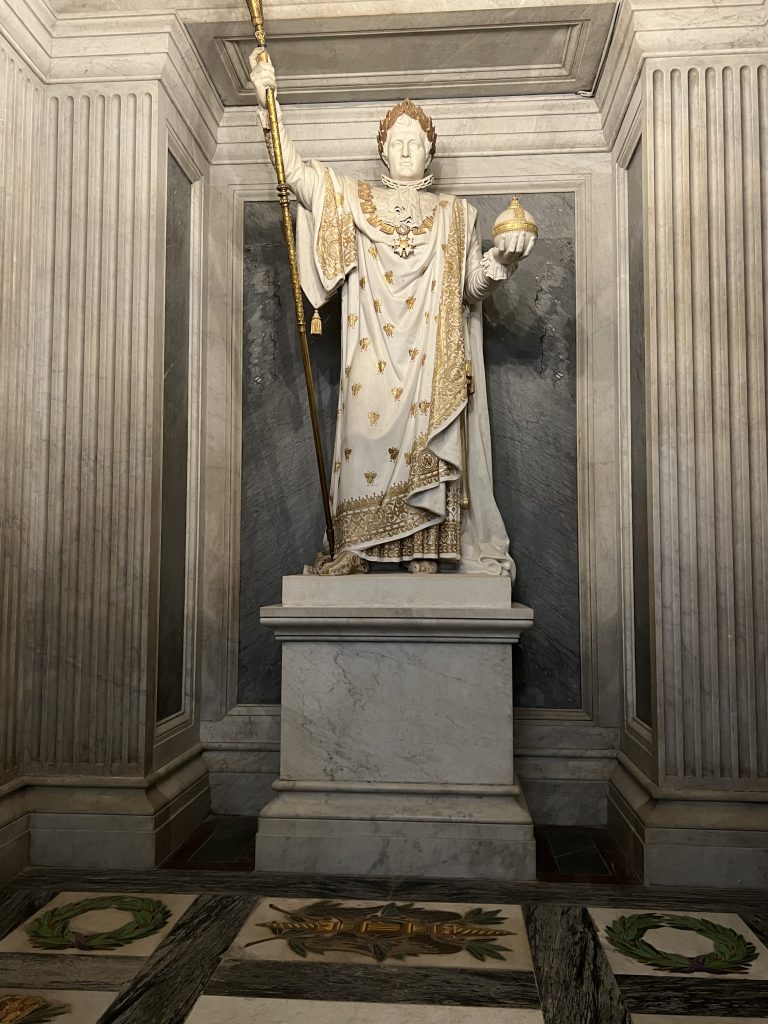
Marshal Lyautey, known for his colonial campaigns, and his close aides, Generals Bertrand and Duroc, are also buried here.
Marshal Foch, commander of the Allied forces in World War I, is also buried nearby.

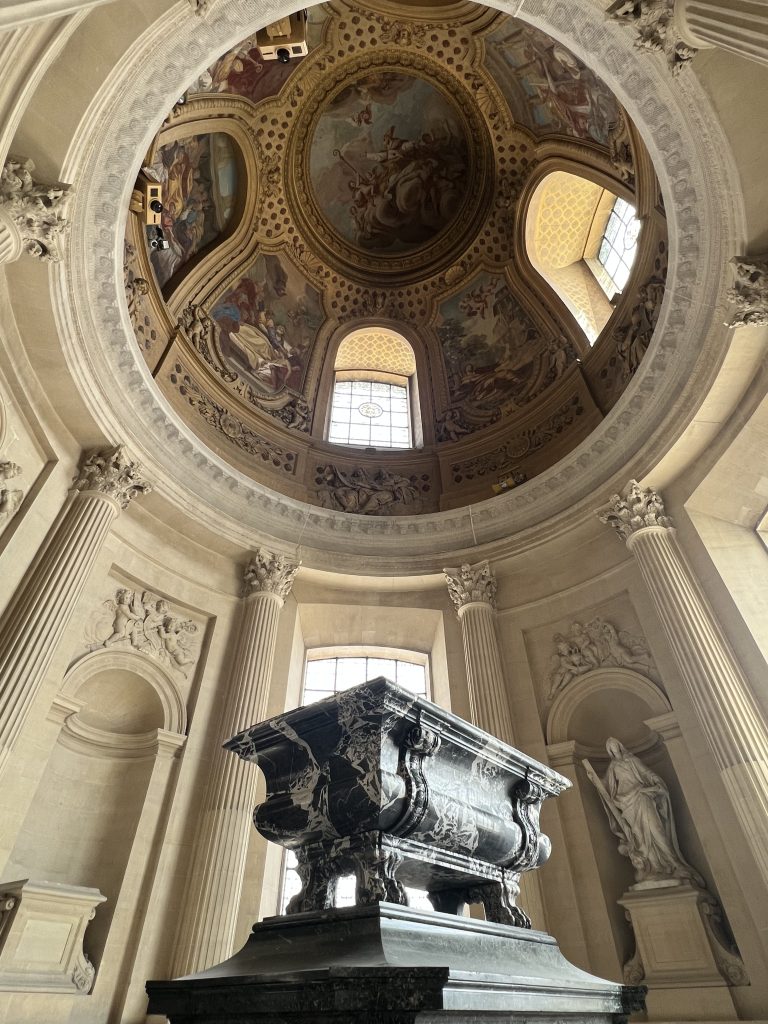
So this is not just a tomb, but the final resting place of Napoleon and his generals.
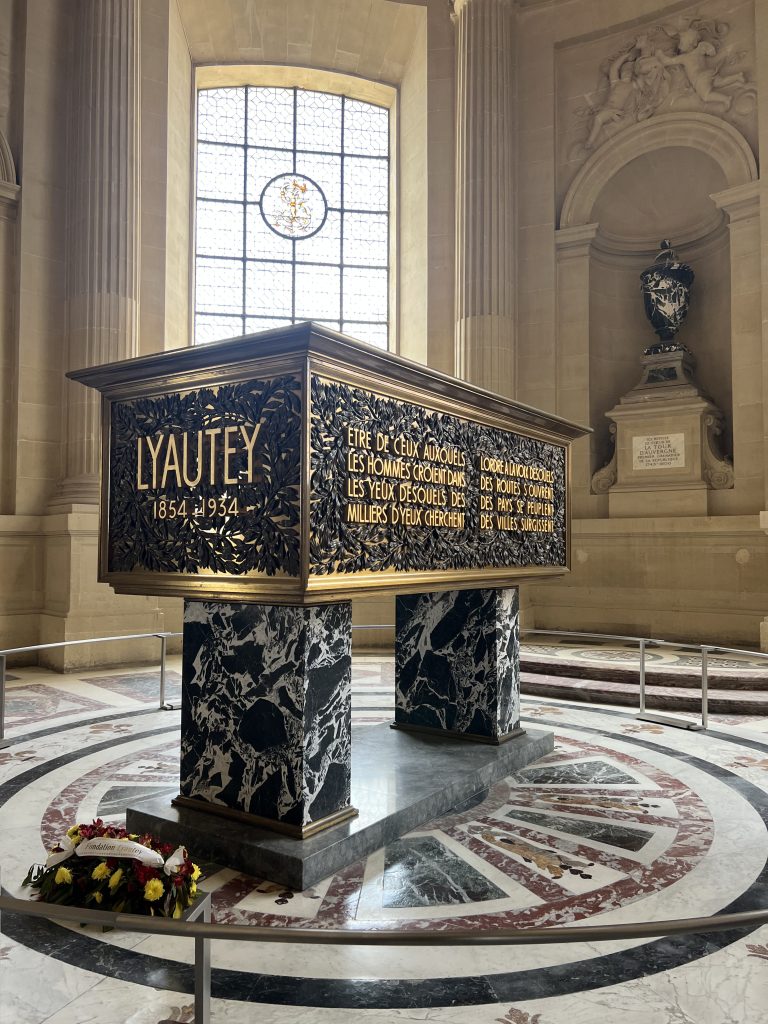

I was expecting a simple tomb, but instead I found a magnificent monument. But what surprised me most was how quiet the place was. Despite the high ceilings, the dozens of people inside, and the ornate gold leaf glistening under the dome, there was an overwhelming sense of silence.
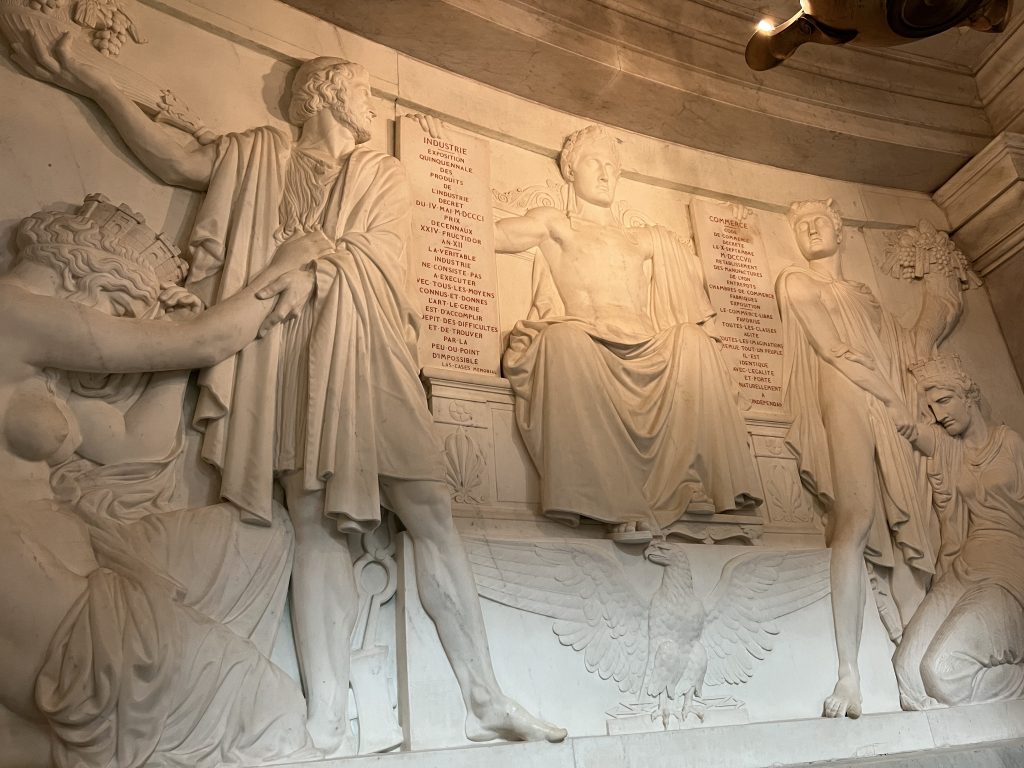
I thought I had come just to see Napoleon. But as I wandered around the chapels and read the plaques, I realized that France is keeping its past alive here. Not only in marble, but also in memory.
Best regards



